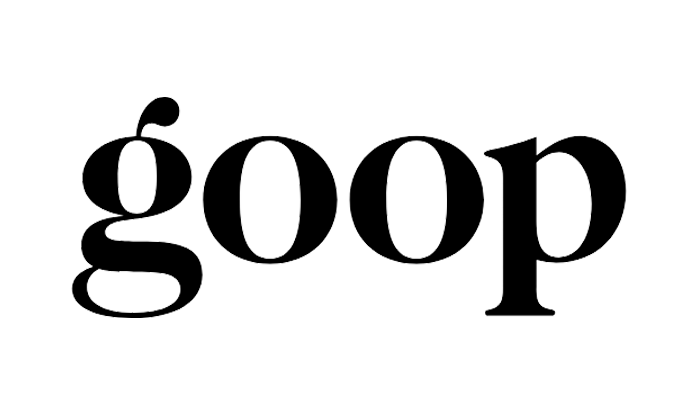The secret to building a scalable cult brand? Design narrow to catch wide.
5 simple tips to build a cult brand
By Erica Eden
Cult brands know how to build user-experiences that are loved to the point of madness. Unlike mainstream brands, cult brands have a hyper-focused consumer base. They rely on super-fans, instead of mainstream users, to inform product development. Cult brand audiences are distinctive and reflect cultural shifts and aspirational lifestyles that mass audiences want a piece of. This, in turn, builds energy, and then momentum and scale.
A cult brand's power is making people feel like they belong to something special. Cult brands bring instant community, creating a pack mentality and common language everyone speaks. Strong communities, like those behind Glossier, Yeti, Beats, Gatorade and Goop, help brands stay relevant because they give people a sense of belonging. TikTok stands out among other social media platforms because it gives people a sense of camaraderie, allowing users to genuinely participate in trends, instead of observing from the outside.
Can we still expect to appeal to “everyone”? The short answer is yes! But the path to mass appeal has changed. Knowing your consumer means more than defining a demographic group, and it goes beyond consumer research with average users — it’s about finding your distinct super-fans. Their collective IQ drives the entire innovation ecosystem: a simple product, seamless experience, and compelling story. It’s a 2-way relationship — when you answer the needs of a leading-edge community, they repay the favor by bringing enthusiasm, credibility, and awareness to the masses, making your business thrive.
The secret to building a scalable cult brand? Design narrow to catch wide.
1. Co-create with super-fans early and often
When Glossier first started, it wasn’t the direct-to-consumer cosmetic giant you know today. Emily Weiss initially launched Into the Gloss in 2010 as a beauty blog. Weiss interviewed beauty aficionados in their bathrooms, and through these intimate interviews she saw fundamental flaws in the conventional beauty industry. So she fixed them.
For example, her best-selling Milky Jelly Cleanser was born from a simple post, “What’s Your Dream Face Wash?” Readers complained about the hassle of using two products for the job, first makeup remover then cleanser. When one commenter asked for ’a lazy girl friendly hybrid’, the team got to work on the simplified 2-in-1 Milky Jelly Cleanser, a.k.a. “one face wash to rule them all.” While big brand execs would rather sell two products over one, Weiss put people over profits with this best seller.
Weiss built an innovation engine where co-creation continues to be the focus of product and brand development. New ideas come from 150 hyper-engaged consumers who post impromptu opinions on Slack channels. Glossier co-creators and superfans feel heard and engaged, like they’re part of the company. Their expertise and enthusiasm brings street cred to wider Gen Z and Millennial audiences.
2. Find the common ground
In 1965, Coach Ray Graves of the Florida Gators noticed how his players lost their edge in the heat. Working with university physicians, he concocted a drink to replenish electrolytes and carbohydrates that players sweat out under the intense Florida sun. With his magic potion, the underdog Gators started winning. Word spread and Gatorade quickly became a staple for university and NFL teams.
Fast-forward to today, Gatorade is still focused on Competitive Athletes. While A-list athletes represent the face of the brand, the real magic isn’t advertising. It’s innovation. Gatorade walks the walk with investments like the Gatorade Sports Science Institute that conducts scientific hydration and sports nutrition research. The lab runs beta tests with pro athletes to inform new product solutions, like Gx customized hydration system and Fast Twitch pre-workout energy drinks.
Athletes represent the untouchable, the elite. But we mortals need to stay hydrated too. Gatorade consistently and relentlessly solves problems for athletes, who share a common set of needs and values with everyday athletes and couch potatoes.
3. Listen carefully
Most high-end headphones are engineered to produce a finely-tuned music experience. When Dr. Dre and Jimmy Iovine wanted to break into the business, they knew they had to bring something different to the table. With a little help from their friends, like Pharrell Williams, Gwen Stefani and Will.i.am, they were able to match the listening experience of a high-energy studio recording — that turned out to be an imperfect, dramatic, bass-driven experience.
Beats’ ongoing collaboration with Hip Hop Artists, from engineering and product design to packaging and brand activation, was the departure needed to stand out in the sea of headphones competitors. They streamlined the end-to-end innovation process, mashing up user-centered research, subject matter experts, brand-building tools, and influencer marketing. It’s safe to say their approach paid off. Even after the brand reached its tipping point when it was acquired by Apple for $3B, its essence remains. Beats still stands as a fashion statement, symbol of support for the Hip Hop community, and go-to for all kinds of music lovers everywhere.
4. Solve a real problem for people
Yeti coolers are a sexy status symbol, and @yetibuttsdaily is proof. But the brand’s beginnings couldn’t be further away. When Roy and Ryan Seiders founded the company in 2006, they weren't dreaming big. As fishermen, they were frustrated by cheap coolers with weak handles and lids that collapsed when used for casting off. So they made a better one — one that would cost a little more and withstand a lifetime of ongoing abuse from outdoor living.
Their “Hook & Bullet” design target didn’t flinch at spending $300 on the signature Tundra hard-shell cooler if it meant they didn’t have to bother with constant replacements. As word of its quality spread, the Yeti cooler became a sort of secret handshake. That helped establish its cult-like status and led to further innovations, like Rambler drinkware, that have planted Yeti firmly in the mainstream without ever losing sight of its mountain stream beginnings.
5. Stay weird
The media loves to hate Goop, a $250 million dollar media company founded by Gwyneth Paltrow. They say she’s out of touch and can’t relate to real people. But her devoted super-fans don’t care what anyone thinks. A united force behind the brand (they’ve taken to calling themselves “Goopies” in solidarity), they’re wholly addicted to Paltrow’s refined aesthetic and first-to-know, fashion-forward take on health, aging, and wellness. Mainstream consumers are left scratching their heads at macro-probiotic diets, adaptogenic herbs, and healing crystals.
A strong base is precisely what early Goop investor, Fredric Court of Felix Capital, is looking for. He says, “The key is customer love. In today’s world, it’s easy to measure how people are interacting with the brand or product. The emergence of a close-knit community early on is something that we look at very closely.” Investor perspective is hard to ignore. But it takes courage to look away from the masses and withstand pressure to please stakeholders who worry about limited appeal. As a path to growth, Goop is proof that it’s a good idea to innovate for a die-hard community — one that’s authentic and sometimes kooky.
Beauty, Sports, Music, Outdoors…
all categories with mainstream respect and admiration. Can we apply the same thinking to less aspirational spaces, like disability? OXO proved that designing narrow, even for marginalized groups like people suffering from arthritis, can lay the groundwork for a premium brand with mass appeal. It all started when Sam Farber asked Smart Design founder, Davin Stowell, to help him design a better peeler for his wife Betsey who complained that her old-fashioned metal peeler hurt her arthritic hands. The OXO Good Grips line of kitchen tools, including the Swivel Peeler which is part of the MOMA permanent collection, is more comfortable and effective to use for everyone, and especially Betsey. Sam and Davin set a new standard in inclusive design that was decades ahead of its time.
Bonus tip: Be brave
Culture changes fast these days. Notions shrugged off as fringe suddenly gain momentum and take root in mainstream thinking. Take gender for example. We used to think it was simple and now we’ve learned how complex it can be. Brands tuned-in to cultural shifts stay above the fray and differentiate from competitors. Primary was founded by moms seeking smarter, modern clothing for their kids — clothing that broke out of the ‘pink for girls, blue for boys’ box. Their solution is a collection of kid-centric, minimalist, organic pieces for every kid. No labels, logos, or slogans. Primary took a brave stance at the right time. They got it just right, IMHO.
How do you scale with a focused audience?
We believe it starts by understanding why people identify with the products they buy. A strong brand is like a mirror, reflecting back whatever identity consumers choose. The smartest companies stay ahead by knowing precisely who they serve and understanding how to make people feel like they belong to something special.
Get in touch to learn more!








